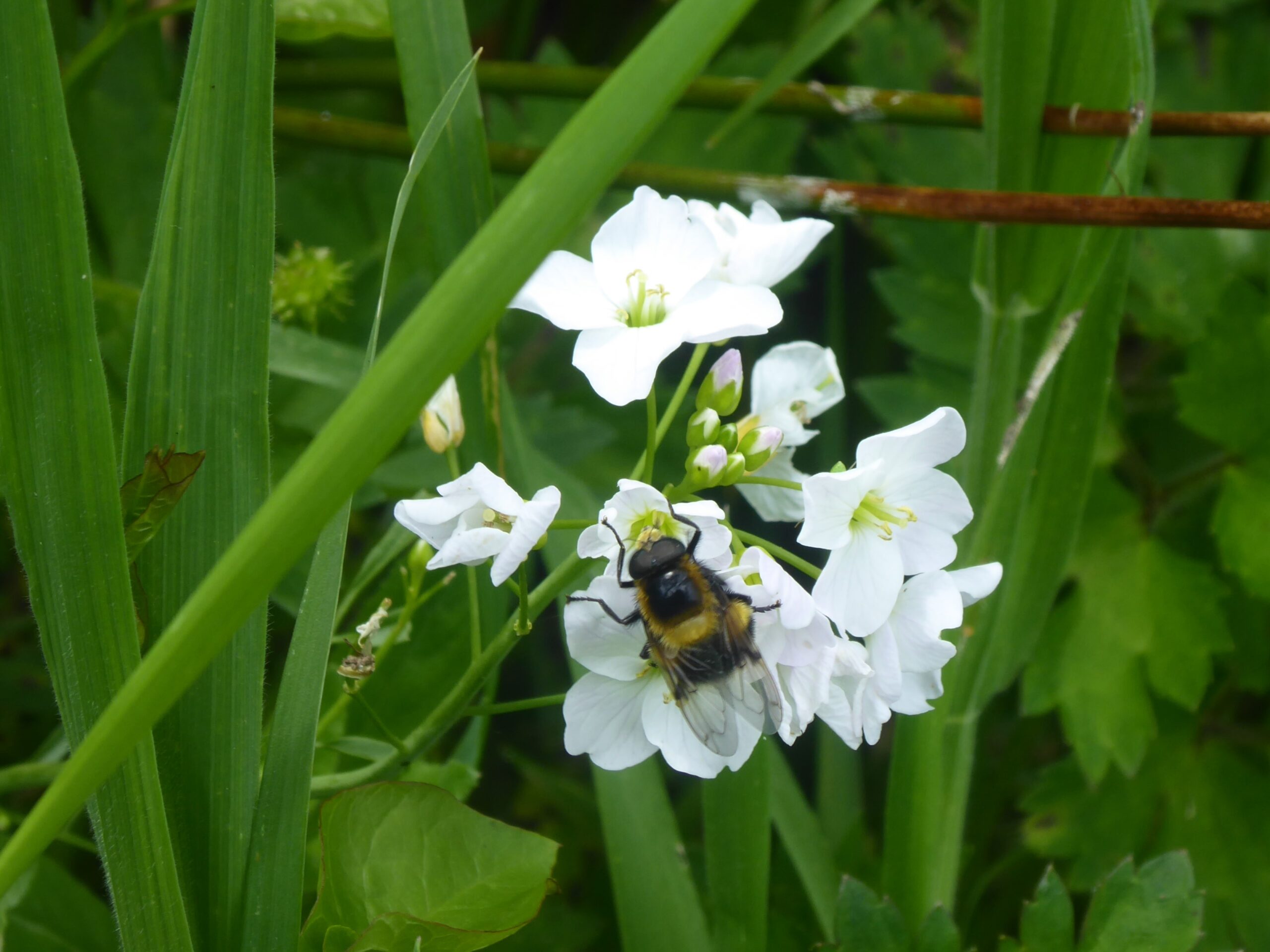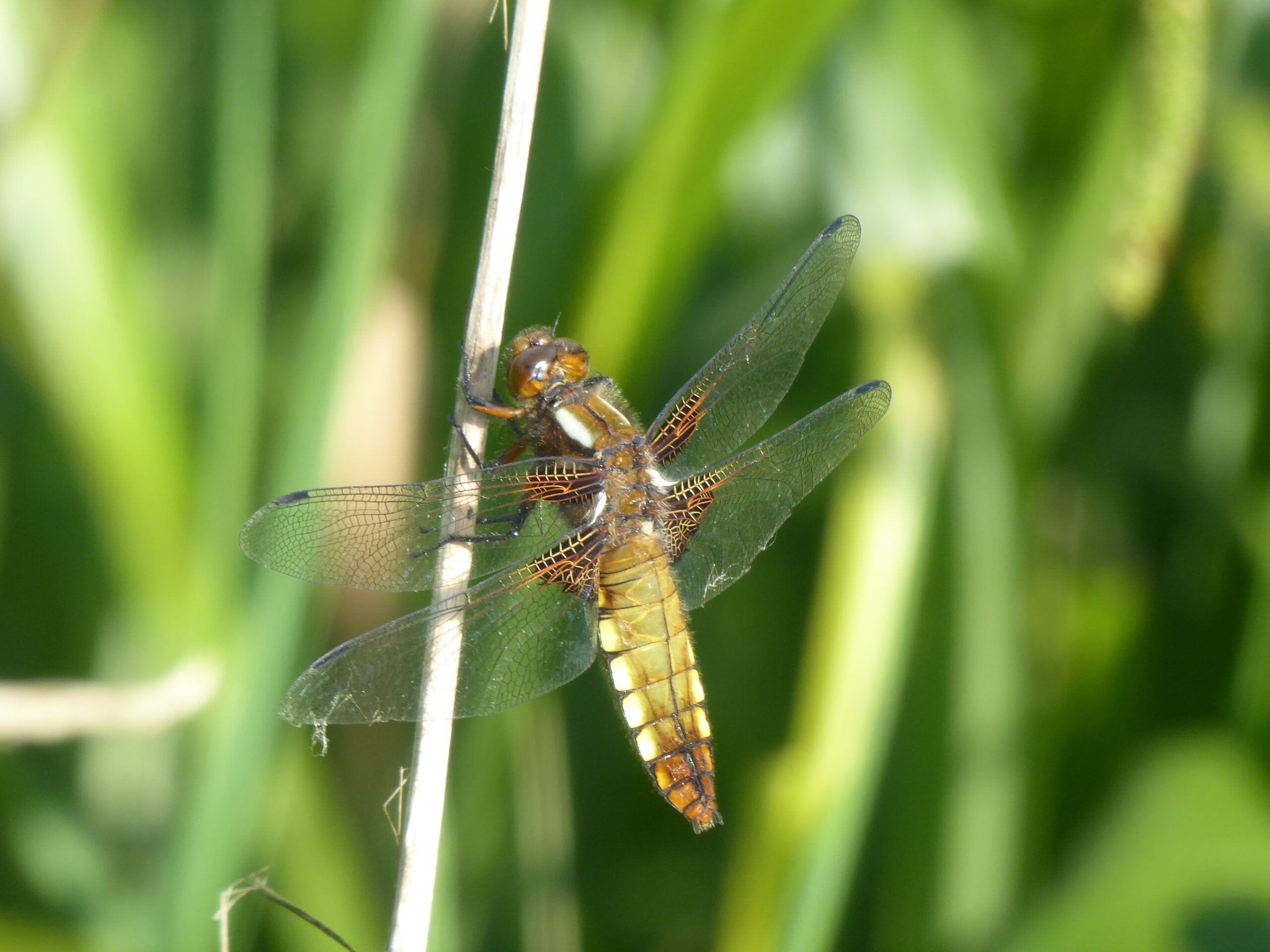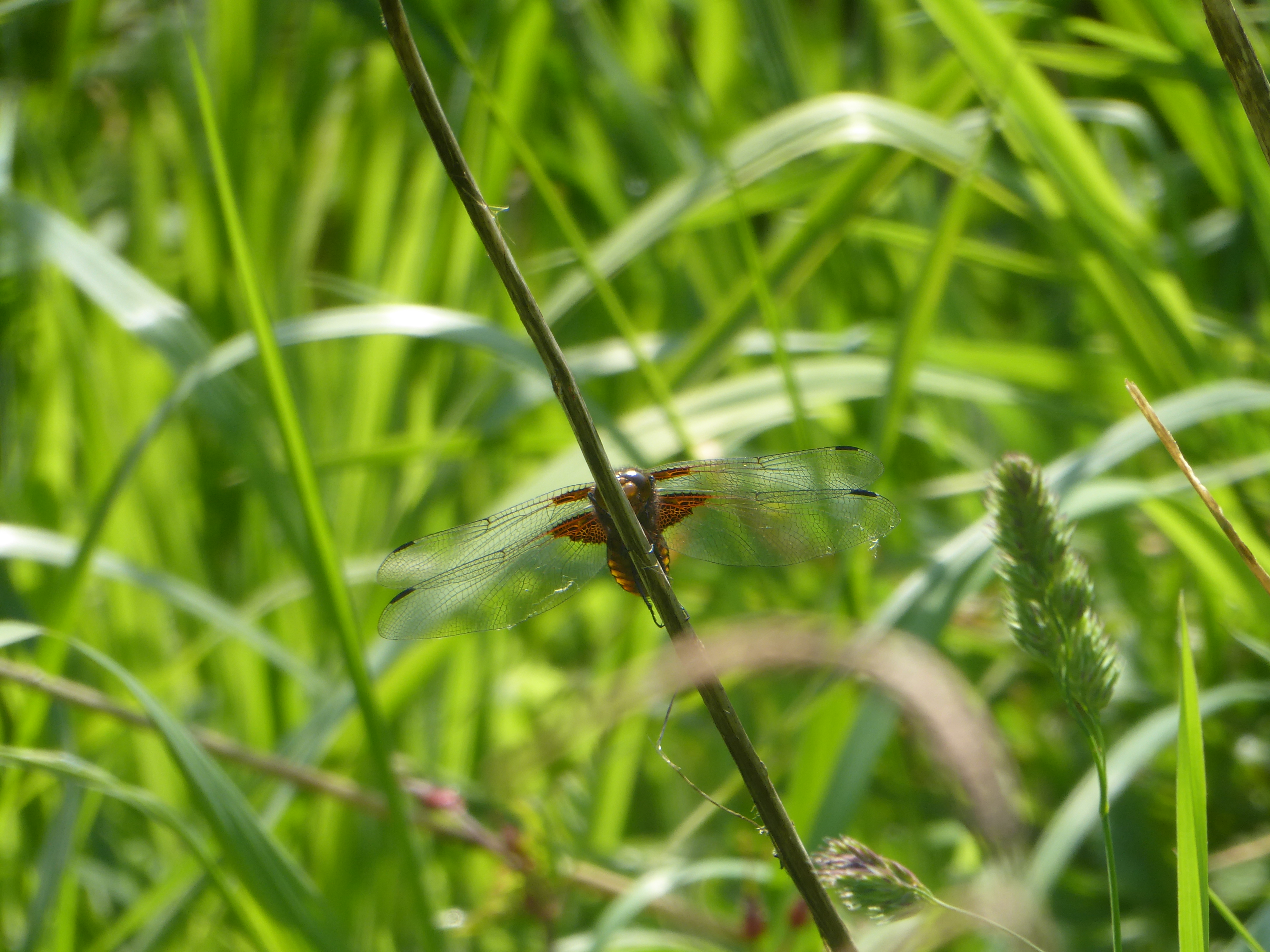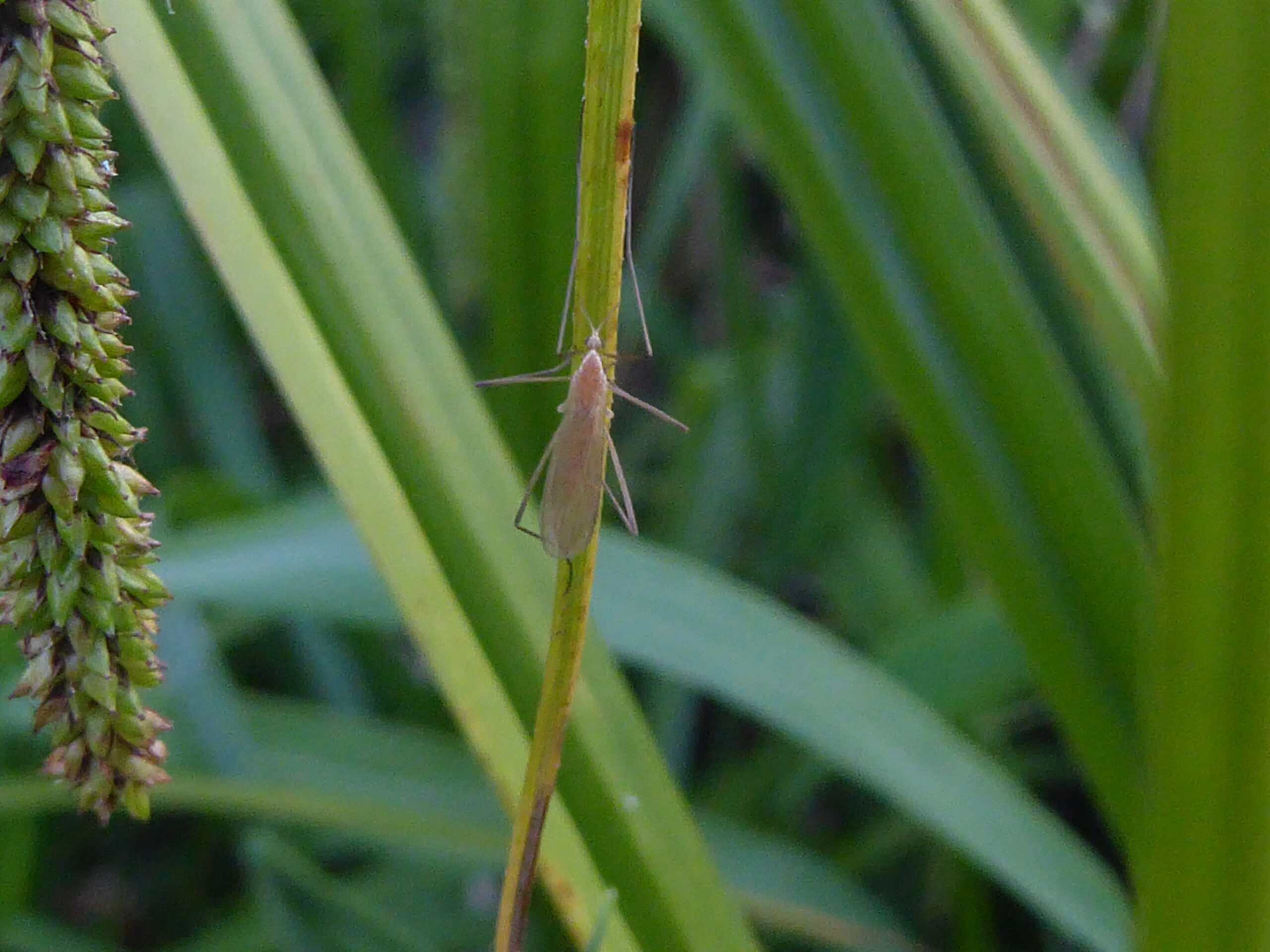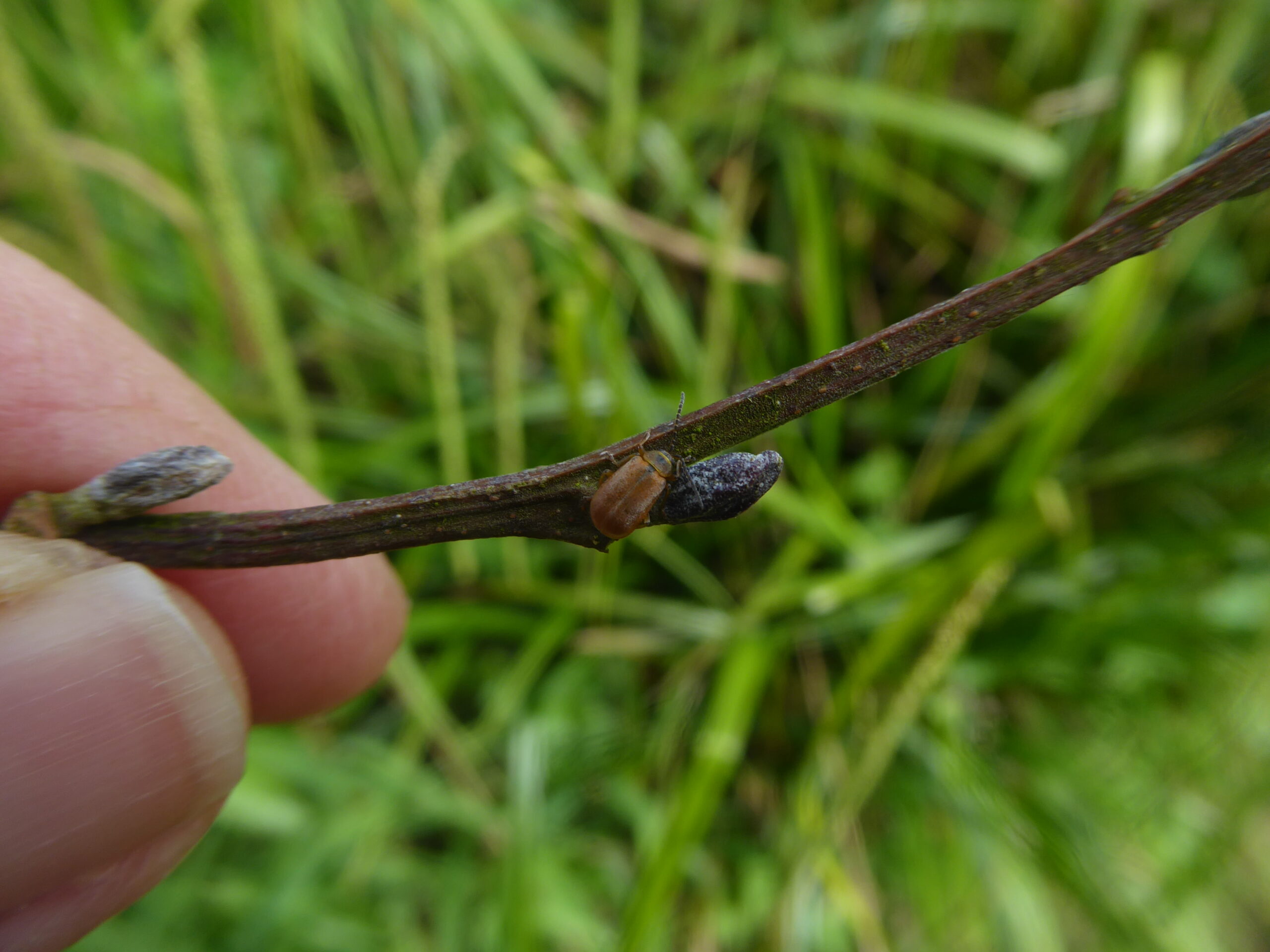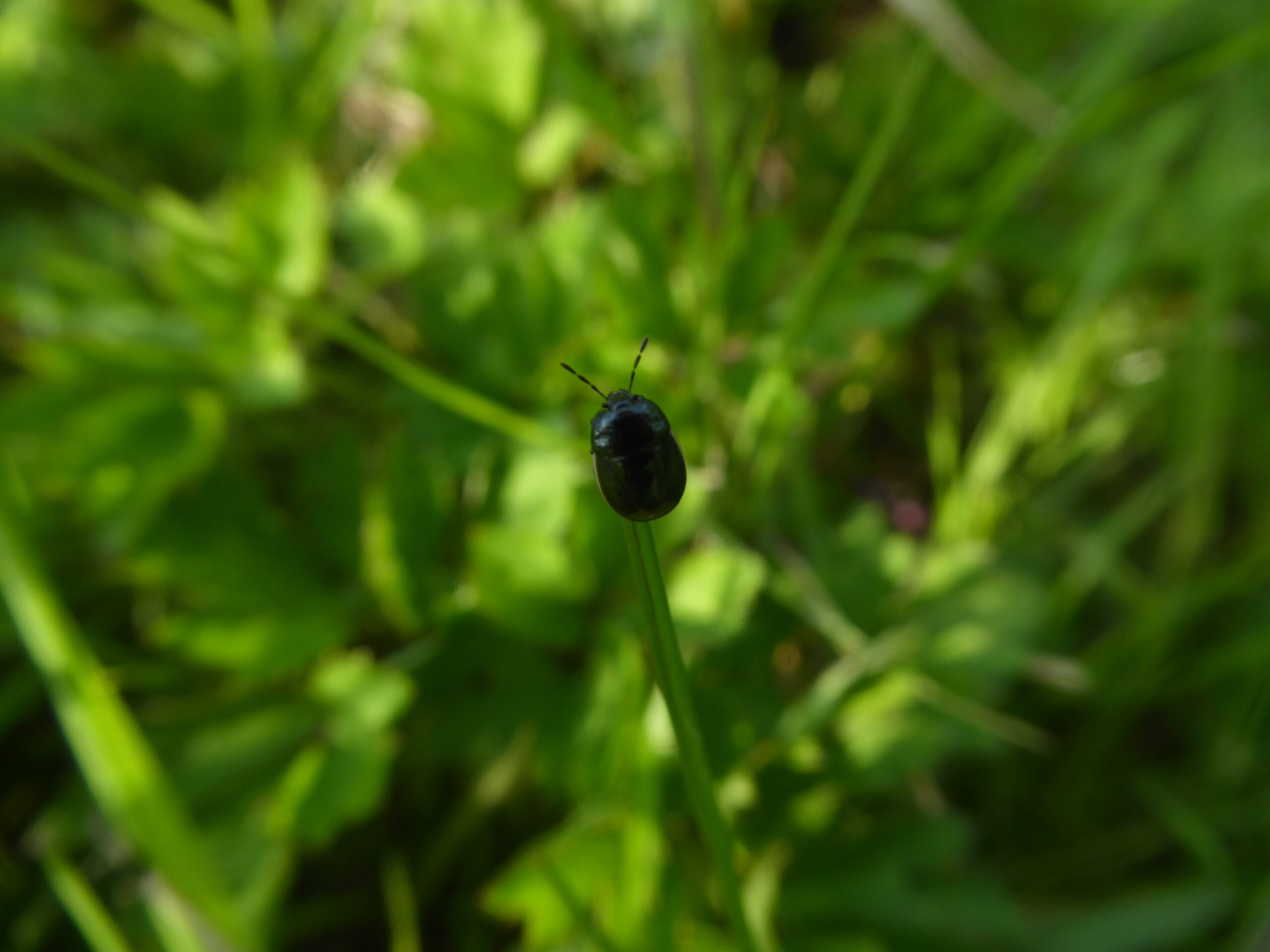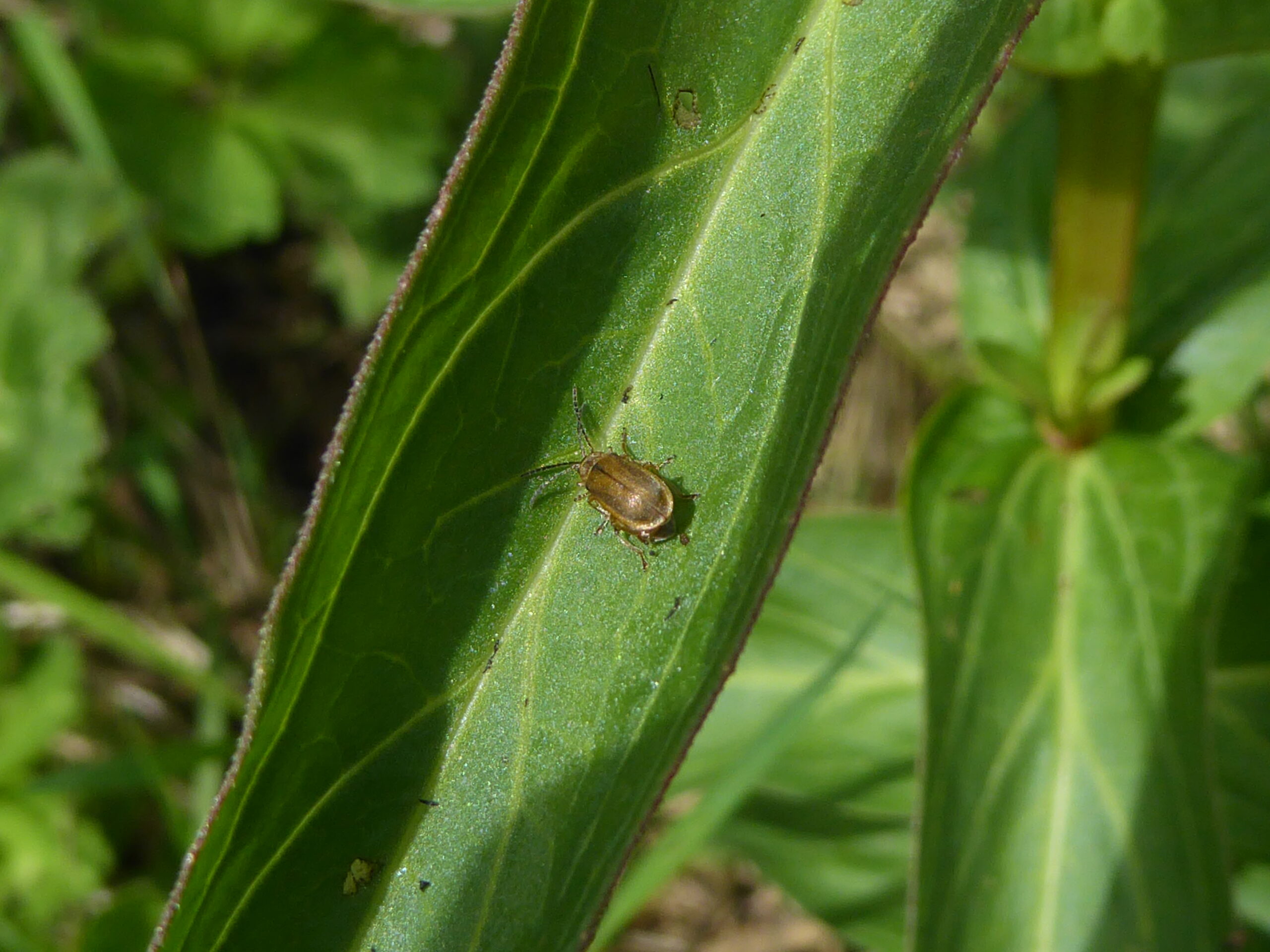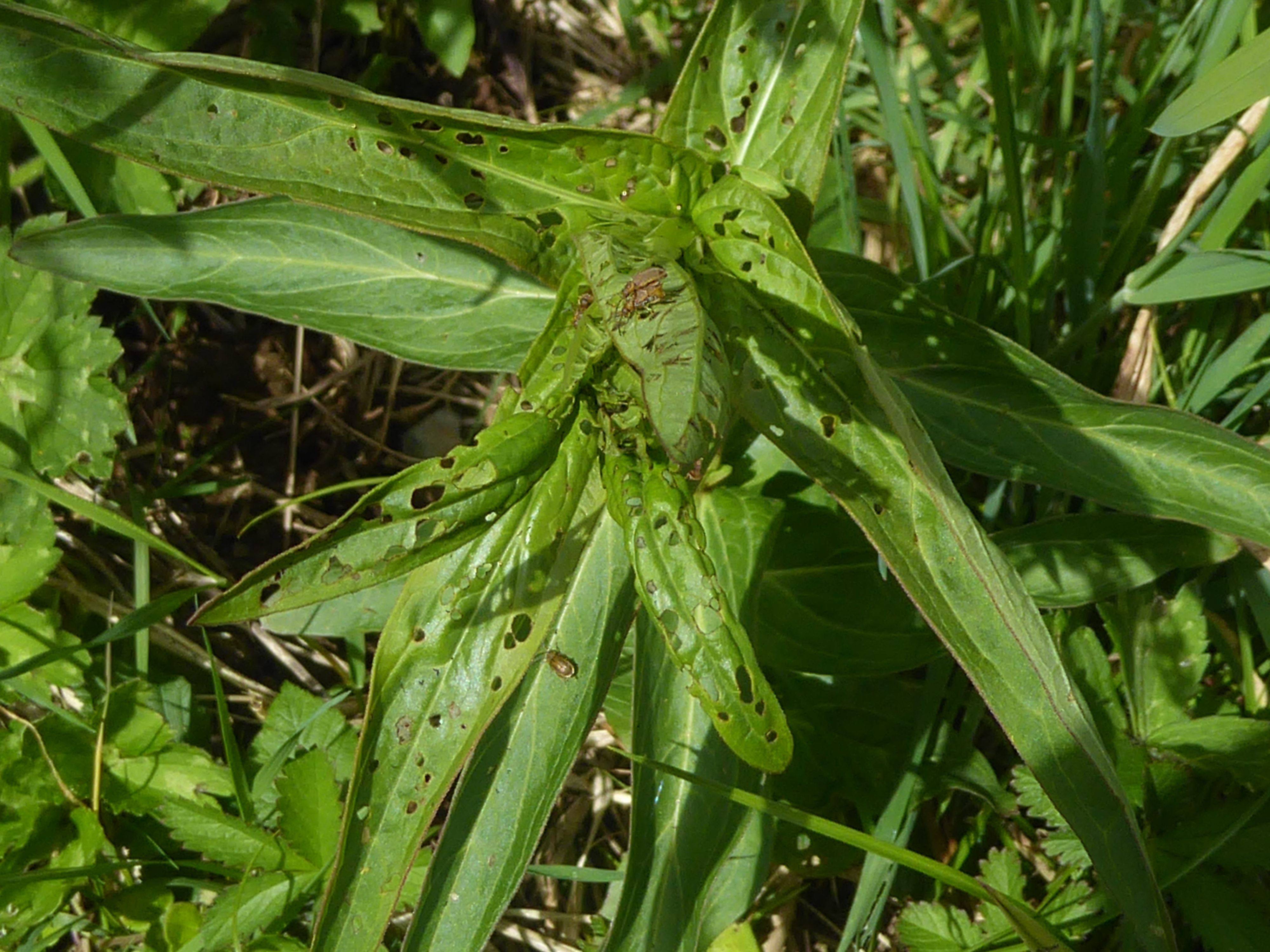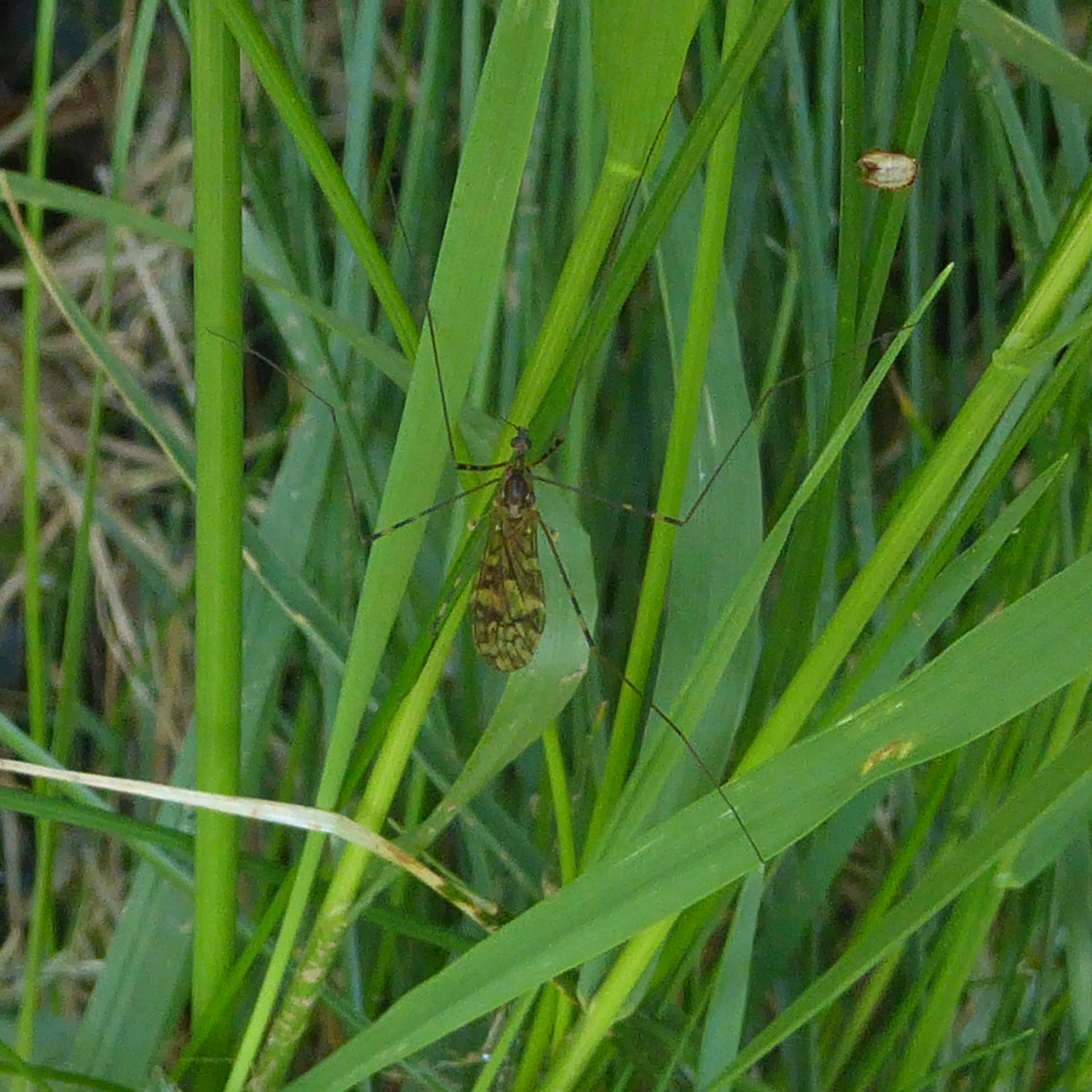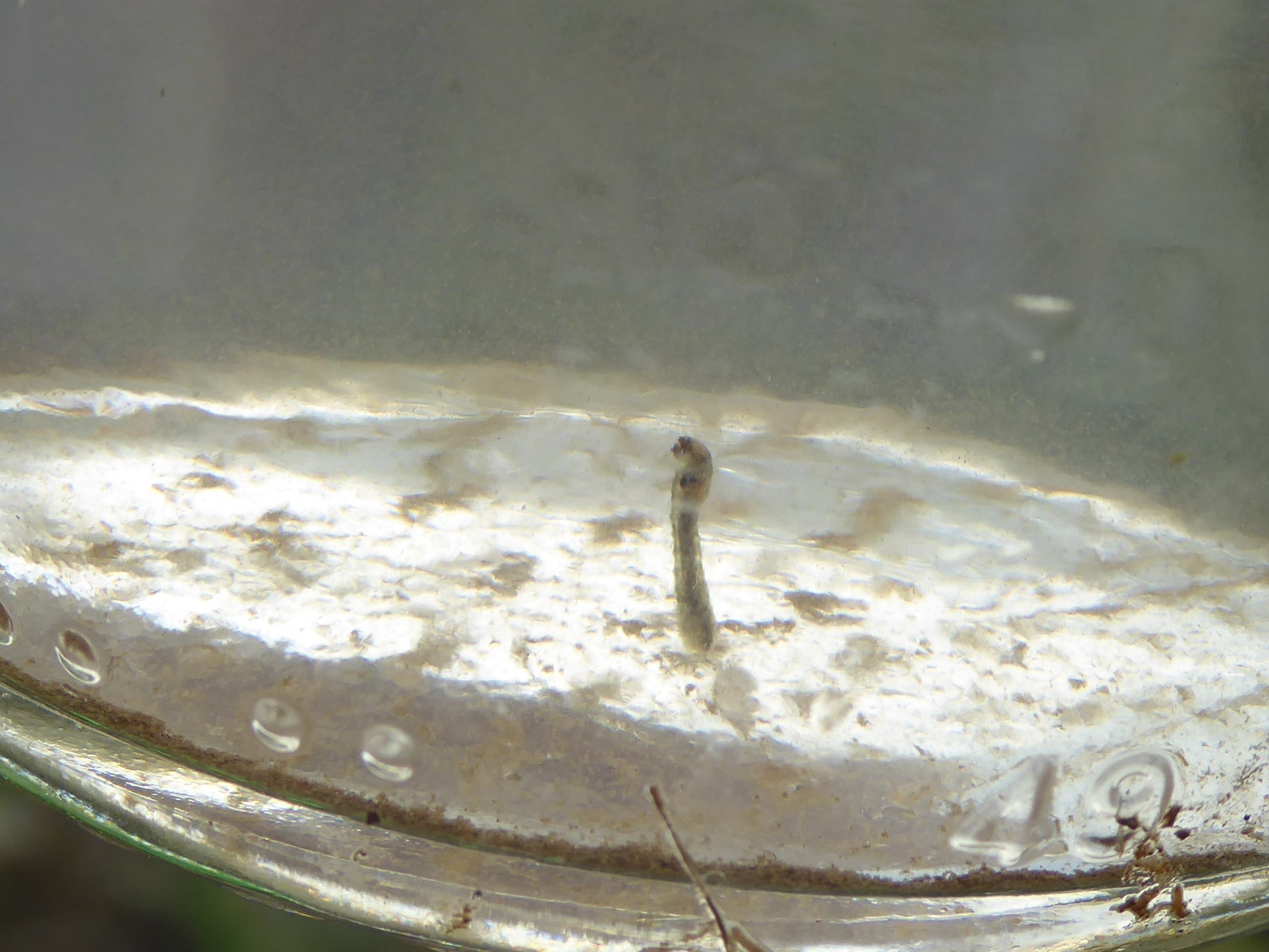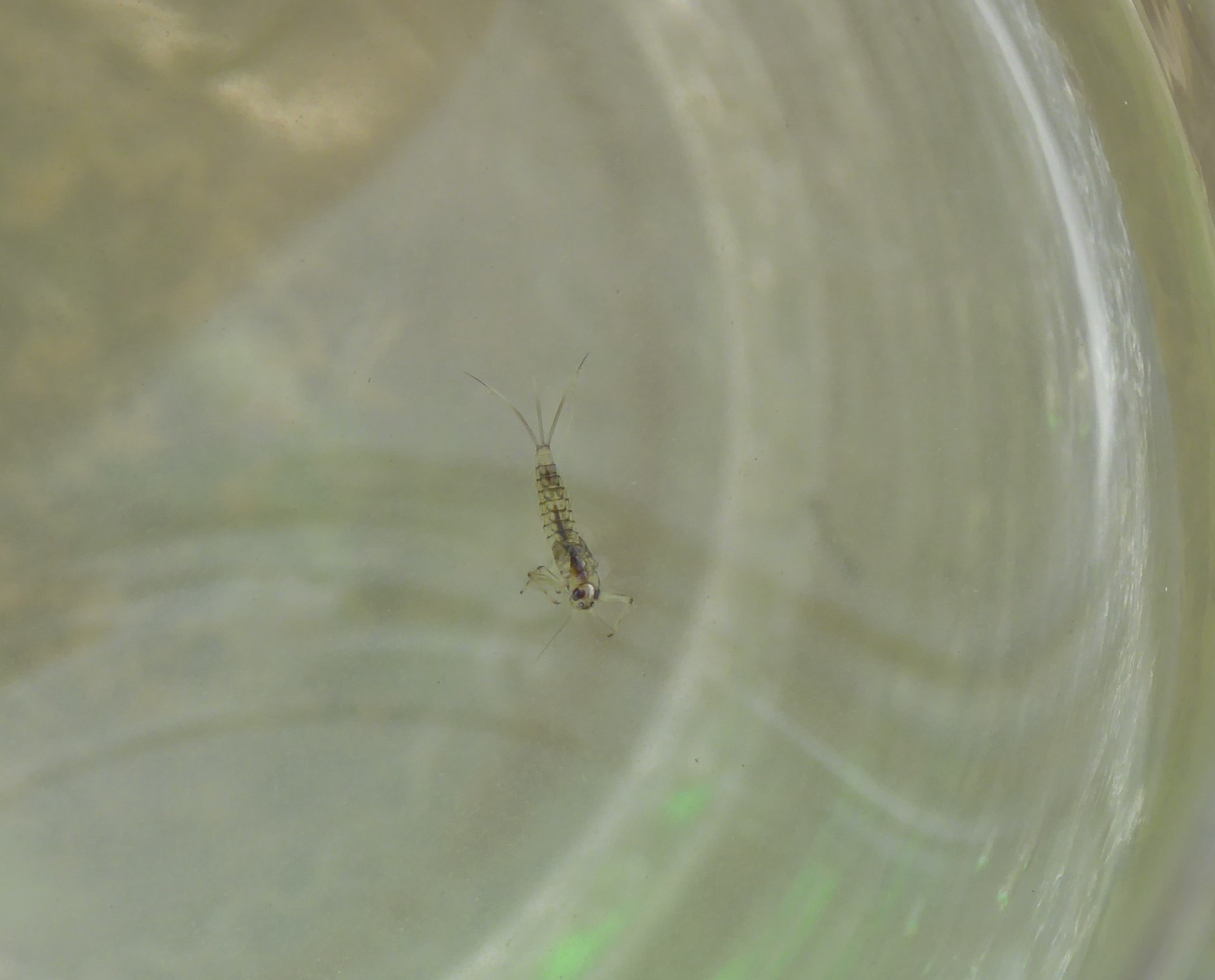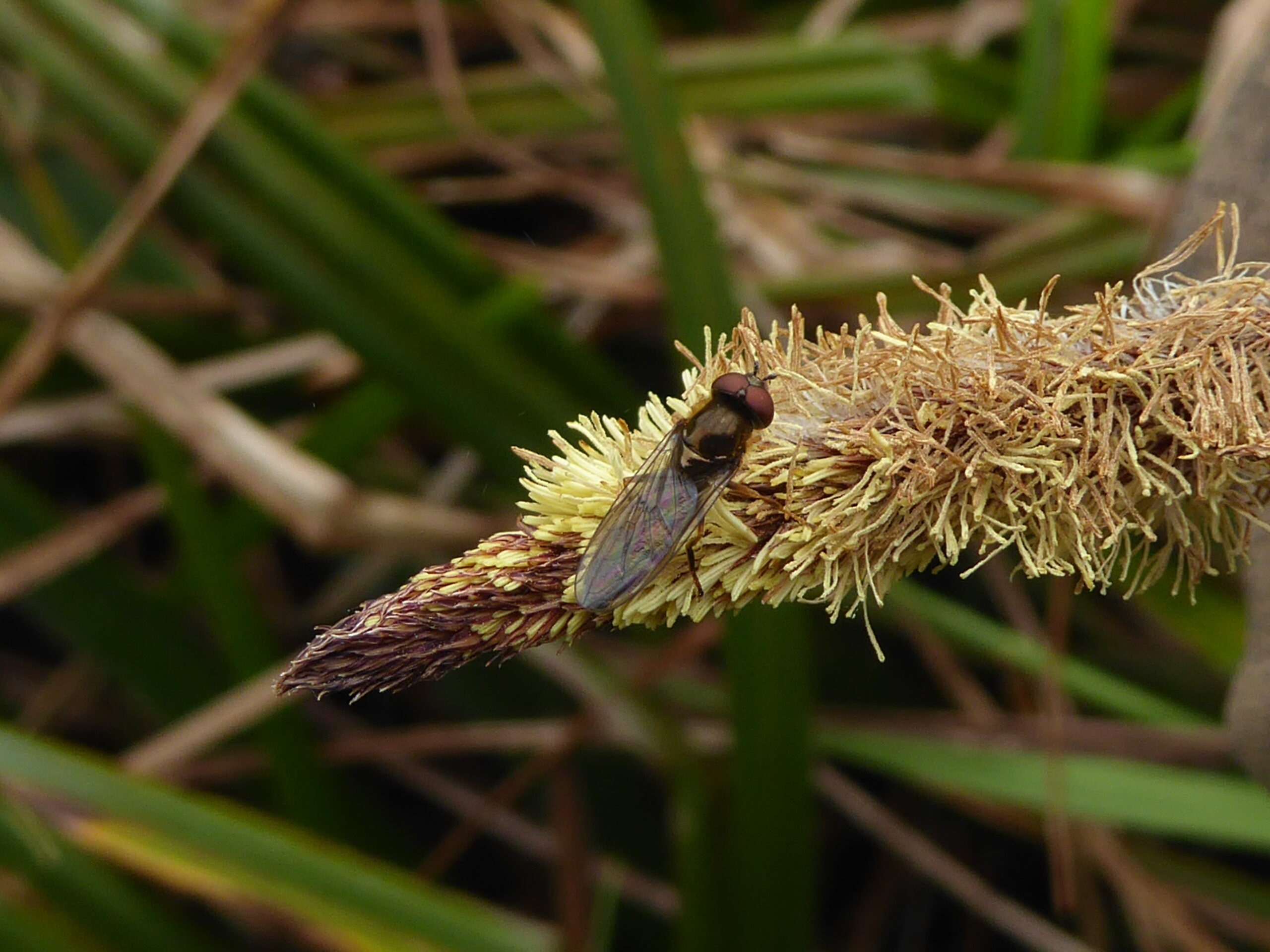Noticing the cuckoo flowers under the alders, was like welcoming back old friends. There were a couple of bumblebees on them, with white tails. I couldn’t remember whether I’d already counted the white-tailed bumblebee, so I took some photos anyway. But wait a minute! Look at its head! Not furry like bees, but a big-bug-eyed fly’s head. I didn’t notice till I looked at the photos on the big screen of the laptop! What we have here is a bumblebee plumehorn – the best bumblebee mimic in town! Yes, it’s a hoverfly. There are two variations – red tailed and white tailed. Obviously, this is the white-tailed version.
Plumehorn refers to its antennae, which are plumed. This hoverfly lays its eggs in the nests of bees and wasps. Sometimes their larvae eat the host larvae.

